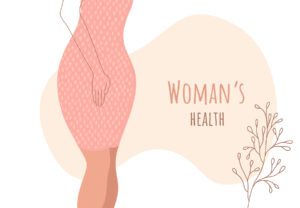By Iris Farrou
07 Sep, 2022
Lifestyle Tips, Menopause, Peri-Menopause, Prevention, Queer Health, Reproductive health, Sexual health, Women's Health
Aging and Painful Sex, Body Changes In Menopause, Easing the Symptoms of Menopause, Lubricants, Lubrication, Painful Intercourse, Peri-Menopause Health, Preparing for Menopause, Sex-Positivity After Menopause, Sooth Vaginal Pain During Intercourse, treatments for vaginal dryness, Vaginal dryness
One of the most often talked about symptoms of menopause is vaginal dryness. It would be ideal if it only showed up when menopause started, but unfortunately it can start happening even a few years before menopause. Just as a bonus, women can also experience vaginal dryness after childbirth, while breast feeding, or even if they are taking certain allergy medicine or certain antidepressants.
years before menopause. Just as a bonus, women can also experience vaginal dryness after childbirth, while breast feeding, or even if they are taking certain allergy medicine or certain antidepressants.
Back to the hormonal factors, however, vaginal dryness begin hand in hand with vaginal atrophy. A truly scary word, though it simply means your body is not producing as much estrogen as before. Estrogen is responsible for the natural lubrication, elasticity, and thickness of the cervix: once estrogen production goes down, the natural lubrication of the vagina is no longer happening, and the vaginal walls can experience thinning, drying, and possible inflammations.
Lubrication
Basically, it all comes back to lubrication: since your body’s natural lubrication system retires at the age of menopause, you need to supplement vaginal lubrication via external (internal) means. Most often, especially because vaginal dryness can lead to pain during intercourse, women will turn towards vaginal lubricants. Though a great solution, it is but temporary. For something more long lasting, you may want to look into vaginal moisturizers. You can apply them every few days to moisturize and keep vaginal tissue healthy.
There is also the option to reinvigorate vaginal tissues. Science really does wonders… this can be
a low dose vaginal estrogen cream, tablet, or ring. Note that this can be prescribed in additional
to other hormonal supplements you may be taking. It is meant to specifically tackle vaginal
dryness, especially if it persists while you are on hormonal treatment post-menopause. You will
need to discuss this option with your doctors and take into consideration any other health issues
you may have faced, particularly breast cancer.
There is also the option of an oral medication, Ospemifene or Osphena, which is more geared
towards addressing vaginal pain during intercourse. It is a selective estrogen receptor modulator,
SERM, medication but women who have a high risk of breast cancer, or have faced breast
cancer, best not consider it as an option. For more details on what this medication can do for you,
consult with your doctor or medical professional.
Another technique to help you ease painful intercourse if you are post-menopausal is a nightly
vaginal suppository containing dehydroepiandrosterone (DHEA).
It’s also important to note that vaginal stimulation or even regular sexual activity, solo or with a
partner, can absolutely help post-menopausal women keep their vaginal tissues healthy. Above
all, remember this is a very natural response of your body to hormonal changes, there is nothing
to be ashamed about, and it is well within your rights to seek healthy treatments that work for
you and your body. You owe it to yourself, and though we can’t turn back the clock, we can
make sure we are living pain-free and comfortable lives within the new parameters our bodies
present to us.
More
By Iris Farrou
07 Sep, 2022
Diet & Exercise, Health Conditions and Pregnancy, Heart health, Lifestyle Tips, Mental Health, Parenting, Postpartum, Pregnancy, Prevention, Queer Health, Reproductive health, Women's Health
Body Changes in Pregnancy, body positive, Body Positivity During Pregnancy, Body Positivity While Pregnant, Eating Disorders and Pregnancy, Healthy Lifestyle, Healthy weight gain pregancy, How much weight should I gain in pregnancy, How to manage weight during pregnancy, how to prepare body for pregnancy, Weight Gain Support
If you have armed yourself with all the knowledge you can gather regarding the possible changes
on your body during pregnancy, then you are one step closer to dealing with the physical effect
of those changes. Some women, though they do know their body will change during pregnancy
and possibly afterwards as well, do not seem to mind it at all. Great! According to a survey of
more than 1500 women, just over 41% said they felt more negative about their bodies after
pregnancy. Which goes to show: the majority of women are struggling with body image while
pregnant. Not to mention what the body image stress is probably not helping the baby…

Is this only related to pregnancy?
Of course not… women in general are held to unrealistic expectations of beauty standards—expectations that the media and society constantly repeat. In recent years, this pressure for body perfection has worsened with the rise of social media. What is worse in pregnancy, however, is that the changes are relatively rapid, weight gain is almost always expected, feelings are exacerbated, and you may even be feeling alien in your own body. A vessel, so to speak. All of these are true: you will most likely gain weight during your pregnancy, it’s possible to develop stretch marks, and it is also a possibility that your post-partum body will not be 100% the same as your pre-pregnancy body.
This is a lot…
Yes, this can absolutely be overwhelming. Despair not! Weight gain is—and we cannot stress this enough—normal, and healthy for your baby. Also, if your doctor or nurse gives you the green light, you can exercise while pregnant. It may be light exercise, such as swimming or walking, or pre-natal yoga. These options help make you more aware of the connection between your body and your mind, perhaps take some of the edge off and your mind off of your worries and are steps to ensure the overall health of your body.
If you are concerned about weight gain during pregnancy, make a plan with your doctor, nurse, or mid wife, about your diet. Allow yourself the small pleasures without guilt: your body is participating in the miracle of nourishing a new life. There is no way to make this happen in a healthy manner unless you experience changes yourself.
What else can I do?
Honestly, don’t bottle up your feelings. Being insecure about, or even disappointed with, your
body image is completely normal. Share those feelings and thoughts with your partner, talk about
those worries with your friends. You may want to join a mom group, or even an online
discussion forum where you can exchange ideas with others on the same boat. If it gets too
much, you can always talk to a medical professional or a therapist. Even if you didn’t have body
image issues before pregnancy, it is not uncommon that future mothers start facing those worries
for the first time when they become pregnant. You are not alone in this!
More
By Iris Farrou
07 Sep, 2022
Breast health, Breastfeeding support, Health Conditions and Pregnancy, Lifestyle Tips, Mental Health, New Moms, Prevention, Procedures, Queer Health, Reproductive health, Women's Health, Young adults & teens
BRCA Gene, Breast cancer prevention, Breast cancer screening, Breast Exam, Breast Exam Buffalo NY, Breast Exams at Home, Buffalo NY, Buffalo OB-GYN, Cancer in women, Healthy Lifestyle, Self-Exam, Self-Examination, women's health tips
It is common practice at your regular OBGYN appointment for your doctor to perform a breast
exam, by using their hands and examining the overall the look of your breasts. Though this is no
substitute for a mammogram, which adult women are advised to have done yearly, it is a useful
method to see whether there are any visible or tactile abnormalities on your breasts. In fact, 40%
of breast cancers were diagnosed because women noticed something unusual about their breasts.

Is this something I can do at home?
Absolutely—and it is a good idea to perform a self-breast examination once every month. Consider it a monthly inspection you deserve, and one that at the very least helps you learn your body better. Using your eyes and hands for this examination, you can develop your own breast awareness and be able to immediately identify changes—should there be any, fingers crossed not!
What do I do?
First and foremost, it is important to choose a time of the month when your breast will not be as tender since this can cloud the results of the inspection. Ideally, during a time when you are not menstruating or ovulating. Secondly, remember you can (and probably should) ask your doctor or nurse practitioner for a demonstration on how to do this at home.
The most effective technique is to start with a visual examination of your breasts. Stand shirtless and braless in front of the mirror, with no-shadow casting light if possible, and place your hands at your sides. Look for any changes in size, shape, possible asymmetry, dimpling, or puckering. Check to see if your nipples are inverted. Then, inspect your breasts in a similar manner but after raising your hands above your head, palms pressed together forming an A shape. You can also lift your breasts and inspect whether the ridges on the bottom are symmetrical. Should you not trust your own vision, or if you have a visual impairment, it’s a good idea to ask a partner, trusted family member or friend, to help you with this.
Is this all?
The visual inspection is the first step. Next, you want to use the pads of your three middle
fingers. If you can’t sense very well with the pads of your fingers you can use your palm or the
backs of your fingers. You can do the tactile inspection in the shower or lying down (that way,
the breast tissue spreads and it’s easier to feel).
Now, take your time, don’t rush, and establish a routine for this part. If you do it clockwise every
time, for example, and in the same order, then after a few times you will be better able to judge
any changes in the pattern of your breasts. The goal here is to feel the depths of the breast using
different levels of pressure—so you can go over the whole tissue. Closest to the skin, use light
pressure. As you go try to feel a little deeper, use medium pressure. Closest to the chest and ribs,
use firmer pressure.
Remember that you are not looking for anything in particular, you are just learning the patterns
of your breasts. So, take deep breaths, take your time, remind yourself this is being done
absolutely for preventative reasons—just like flossing!
More
By Iris Farrou
05 Aug, 2022
Lifestyle Tips, Prevention, Procedures, Queer Health, Reproductive health, Sexual health, Women's Health
BRCA Gene, Cancer Screening, Cervical Health, how often pap smear, How often should you see OBGYN, HPV, Pap smear, Regular STD Testing, Screening, Test, When Should I Start Seeing a Gynecologist
The most common gynecological care procedure may be the Pap Smear—and it’s no secret that
it revolutionized women’s health and made it widely accessible—but a close second is cervical
cancer screening. Now, don’t let the words scare you: it doesn’t mean you have to get this
screening done if you are suspecting you have cancerous cells. It simply means this screening
tests specifically for evidence of HPV in the uterine cervix. A Pap Smear, on the other hand, tests
for precancerous cells on the cervix—cells that may turn cancerous if not treated correctly.

How does it happen?
Cervical cancer screening is a similar procedure to a Pap Smear: they both happen in a clinic, a
medical office, or a community health center. It’s common to get those tests done during a pelvic
examination. Much like the Pap Smear, using a vaginal speculum, the medical professional will
collect cells and mucus from the cervix and vagina and send them for lab testing. A Pap Smear
checks to see if the cells look generally normal. A cervical cancer screening specifically tests the
cells for HPV.
Why do I need it?
Remember the primary goal of a cervical screening is to routinely look for abnormal cervical
cells with severe cell changes so they can be removed, and cancerous cells can be stopped from
developing. It is a routine examination for anyone who has a uterine cervix and is sexually
active. Nearly all types of cervical cancer are caused by sexually transmitted HPV. A secondary
goal of this screening is to identify cervical cancers at an early stage so they can be treated
successfully and avoid further problems.
When should I get tested?
Most sources suggest that you should start getting Pap Smears and Cervical Screenings after the
age of 21. However, many people are sexually active before that age—you should be getting
regular routine examinations as soon as your become sexually active. The standard suggestion is
to be screened every 3 years, considering your results come back normal, but if you have
personal concerns and the ability to be tested every year—better safe than sorry!
If you are older than 65 and have had regular tests and satisfying results for several years in a
row or have had your cervix removed for non-cancer related reasons, you may not need to be
screened anymore. However, that is still a personal decision, and you are entitled to be keeping
as many tabs on your health as you want.
More
By Iris Farrou
05 Aug, 2022
Geriatric Mental Health, Lifestyle Tips, Mental Health, Prevention, Uncategorized, Women's Health
aging parents, Depression, Depression symptoms, Elderly, Geriatric, isolation, Loneliness, Mental Health, Socialization

Our physical and mental health is directly connected to regular, healthy, and enjoyable
socialization with friends and family, colleagues, people who share our hobbies and interests…
With COVID-19 severely affecting our socialization levels, many found themselves with
increased loneliness, anxiety, and depression—thus bringing down their immune system and
overall physical health. However, it is a harsh truth that elders suffered from isolating and social
distancing extremely more than younger people.
Unfortunately, elder isolation and loneliness is not solely a COVID-related phenomenon. A
study by UCSF found that more than 40% of seniors regularly experience loneliness. The same
study also drew direct connections between loneliness, serious health issues, and death among
the elderly population. One can only imagine how much worse this got during COVID isolation.
Health Issues
Individuals with low social interaction levels are more likely to suffer from anxiety and
depression, and experts have found direct links between loneliness and suicide. Senior
individuals with limited social lives have also been found to suffer from worsened dementia and
Alzheimer’s disease—or rapid progression compared to elders with a rich social life—coronary
artery disease, heart failure, and increased risk of stroke.
Benefits of Socialization
The good news is that socializing helps combat most, if not all, of the health issues loneliness
creates. A social life can benefit elders because it:
- Increases mental awareness: when we interact with others, we remain connected to the
outside world and keep our cognitive abilities sharpened. After all, the brain is a muscle.
- Fights anxiety and depression: though these may be chronic conditions, socializing helps
keep anxiety and depression at bay—especially if both are related to ageing. At the very
least, it proves that others care and helps build a community.
- Support system: elder socialization reminds us there is a community of same-aged
people, as well as friends and family, who are present for emotional and physical help.
- Physical discomfort relief: though physical pain can be very sharp, socialization provides
a break from a lonely routine, gets us going, and takes our mind off of aches—even for a
little while.
Overall, elder socialization not only creates a healthier quality of life and has the potential to
extend life. With technology seniors can be closer to their loved ones much more easily: daily
use of social media, adopting a pet for companionship, utilizing companion services, trying to
enjoy meals socially, participating in local activities (if possible) and ensuring reliable
transportation are just some of the ways that eliminate elder social isolation.
More
 By the third trimester of pregnancy, you are probably already used to an overall discomfort and a changing body, but it is quite common that pains and aches become much more prevalent in the last three months before your due date! Don’t worry, there are ways to address this discomfort and make your body and soul feel more comfortable and relaxed to welcome your new baby.
By the third trimester of pregnancy, you are probably already used to an overall discomfort and a changing body, but it is quite common that pains and aches become much more prevalent in the last three months before your due date! Don’t worry, there are ways to address this discomfort and make your body and soul feel more comfortable and relaxed to welcome your new baby.
Some Common Symptoms
Several of the symptoms you experience during the second trimester may continue into the third one, though many women report that morning sickness is not as prevalent. Your baby is growing and pushing on your organs more and more, so despite your own discomfort, the aches are actually a good sign! Many women report that they have difficulty breathing or have to go to the bathroom more often. Pressure on your pelvis, more of the baby kicking, as well as heartburn are also common symptoms of the third trimester. Swelling in your fingers and ankles, breast tenderness, and a protruding belly are also to be expected!
Self-Care
It’s important to have at least five appointments set up with your healthcare provider in the third trimester of your pregnancy: at 30 weeks, 34, 36, 38 and 40. Since heartburn is very prevalent, try to manage your diet so you consume foods that are less acidic and help balance your stomach and gut health. Though antacid preparations can be used, it is advised that they do not become the standard.
Troubled sleep can cause you to feel exhaustion but try to stay away from sleeping pills. A warm bath before bed can help you relax and ease your aches and a cool temperature in your space will help you not overheat. Try using a body pillow to support you while you’re sleeping, or smaller pillows to support specific areas and ease the tension while you sleep.
False Contractions
It’s quite common that your body will try to prepare you for labor towards the end of your pregnancy by creating false contractions. These are also called “Braxton Hicks” and resemble menstrual cramps or a tightening in the abdomen. There is no specific treatment for those, but you can change your body’s position, try some light yoga or light exercise to relax, nap if you can, and drink water. If those persist or even become stronger, it may be time to contact your doctor!
More
 We associate night sweats and hot flashes with menopause. If anything, they are the tell-tale signs that a woman is premenopausal. However, there can be other factors that cause night sweats in women, who seem to experience them more often than men, according to the Sleep Foundation.
We associate night sweats and hot flashes with menopause. If anything, they are the tell-tale signs that a woman is premenopausal. However, there can be other factors that cause night sweats in women, who seem to experience them more often than men, according to the Sleep Foundation.
Hormones and Thermoneutral Zone
The thermoneutral zone is the range of temperatures a body is comfortable with. For example, our body causes shivers to keep us warm and it sweats to cool us down we stay within this zone. Sometimes, when a bodily process impacts the thermoneutral zone, we may experience night sweats.
Changing hormone levels in our body are one of the bodily processes that cause variations in our thermoneutral zone. Women in perimenopause or in menopause experience severe drops in their estrogen and progesterone levels, but similar hormonal changes also happen during menstrual cycles: sweating and hot flashes can be symptoms of premenstrual syndrome (PMS).
When Does it Happen?
You can except a slight increase in your body temperature, which often goes unnoticed, around the 14th day of your cycle, when progesterone levels go up. When those rise, estrogen levels fall. The decrease of estrogen affects your hypothalamus, which is responsible for keeping your body temperature at a steady level. At the same time, your brain produces more norepinephrine and other hormones. Though this is not a negative function, those hormones make you more sensitive to even the slightest changes in body temperature. As a result, your body sweats to cool off even if it’s not really necessary.
How to Deal With it
Since these hot flashes and night sweats are not the result of menopause, you may be able to deal with them in simple ways and by using home remedies.
- Try to keep cool, and continue keeping cool, by dressing in layers. That way, you can remove or add layers as needed. Adjust the room temperature if possible, using fans or opening windows.
- Be careful with eating hot, spicy, foods that may raise your body temperature. So can caffeine and alcohol, so it may be best to avoid or minimize them.
- Smoking is also linked to increases in body temperature, amidst other harmful results. It is definitely worth keeping that one in mind and removing it from your life.
- If you are overweight, it is possible that this is connected to night sweats and hot flashes.
Though the evidence is inconclusive, some women find relief through alternative medicine, such as mindfulness meditation, acupuncture, cognitive behavioral therapy, and even hypnosis. It’s worth a try if it may help you sleep better!
More
 If you are considering feminine rejuvenation, chances are it’s vaginoplasty you have in mind. And you are correct! Vaginoplasty is the most commonly talked about type of vaginal rejuvenation, but it is not the only one. Surgical treatments include labiaplasty, clitoral hood reduction, mons pubis reduction, and vaginoplasty as part of gender affirmation surgery. There are also some non-surgical options for feminine rejuvenation treatments.
If you are considering feminine rejuvenation, chances are it’s vaginoplasty you have in mind. And you are correct! Vaginoplasty is the most commonly talked about type of vaginal rejuvenation, but it is not the only one. Surgical treatments include labiaplasty, clitoral hood reduction, mons pubis reduction, and vaginoplasty as part of gender affirmation surgery. There are also some non-surgical options for feminine rejuvenation treatments.
What Does it Do?
Overall, feminine rejuvenation treatments reshape, tighten, or reduce female genital tissues to help restore a firmer tone or symmetrical appearance. Though some patients choose feminine rejuvenation procedures for cosmetic reasons, others choose it to treat problems caused by vaginal tissue laxity, such as incontinence and discomfort during intercourse. Additionally, trans individuals who undergo gender affirmation surgery opt for vaginoplasty.
Who Needs It?
Comfort, safety, and self-confidence are major values feminine rejuvenation seeks to address. Misshapen or overly large labia can cause a lot of discomfort when exercising or wearing tighter clothing. Urinary leakage, vaginal dryness, and painful sexual intercourse are issues women face after childbirth or menopause.
The appropriate procedure can help reduce or eliminate urinary incontinence, alleviate vaginal dryness, help clothing fit more comfortably, improve sexual sensation, and provide changes to the genital area. All in all, the end goal of feminine rejuvenation methods is to alleviate any medical issues and ensure individuals are comfortable in, and happy with, their bodies.
Different Procedures
Labiaplasty: a surgical procedure to treat overly large or misshapen labia, as well as moderate to severe sagging in labial tissues, and other serious cosmetic issues that bother a patient. Discomfort is mild and recovery is fairly straightforward.
Vaginoplasty: a surgical procedure that takes place as either part of gender affirmation surgery or to treat childbirth injuries. May include different types of postsurgical care and recovery can take weeks or months.
Clitoral Hood Reduction: enlarged clitoral hoods can cause a lot of discomfort. This procedure removes excess tissue over the clitoris to address that, as well as improve sexual experiences.
Mons Pubis Reduction: for a more streamlined appearance to the pelvic area, excess fat and skin are removed from the mons pubis.
Non-Surgical Methods: most often using vaginal rejuvenation devices that emit gentle radio frequencies or therapeutic heat, non-surgical methods can help with urinary incontinence, sexual comfort, and vaginal dryness. Though the results may show quickly, they are not long lasting.
Risks
The type of feminine rejuvenation a patient undergoes depends on their unique medical condition, as well as the effect they desire to achieve. Different types of vaginal rejuvenation come with different timelines for healing, and some recoveries may be more complicated than others—vaginoplasty, for example, can take longer to heal than labiaplasty and can cause more complications during the recovery period.
If you are experiencing discomfort or are having symptoms that indicate feminine rejuvenation may help you live a healthier life, contact your medical professional to initiate an assessment and become further educated on the risks, benefits, and postsurgical care requirements associated with your case.
More
 Pelvic organ prolapse is when pelvic organs slip down into—or even protrude out of—the vagina. This happens when there is not enough support for them due to weakened ligaments and pelvic floor muscles. Organs that may be affected are also the bladder, the vagina, and the rectum. As such, pelvic organ prolapse includes uterine prolapse, dropped bladder or cystocele, and rectocele.
Pelvic organ prolapse is when pelvic organs slip down into—or even protrude out of—the vagina. This happens when there is not enough support for them due to weakened ligaments and pelvic floor muscles. Organs that may be affected are also the bladder, the vagina, and the rectum. As such, pelvic organ prolapse includes uterine prolapse, dropped bladder or cystocele, and rectocele.
Who does it affect?
It may sound like a problem for much older women, and it is true: pelvic organ prolapse in its majority affects postmenopausal women and women who may have had more than one vaginal delivery. However, it can happen to women of any age, and it is recorded that pelvic organ prolapse affects 3% of women in the United States. A 2009 study in Obstetrics and Gynecology found that white and Hispanic women are more at risk for pelvic organ prolapse than women of other racial and ethnic groups.
How do I recognize it?
It may be easier to recognize the first symptoms of pelvic organ disorders, which are usually more common, and are accompanied by uterine incontinence or fecal incontinence. Though incontinence on its own does not necessarily mean your pelvic organs have prolapsed, it can generally be a tell-tale sign. Organ prolapse will cause a visible bulge in the vagina, or sometimes you may experience uncomfortable pressure during sex or other physical activities.
The feeling of discomfort or constant pressure in the pelvis is a common symptom, especially if that pressure gets worse as the day goes by. You may also find that you are having trouble inserting tampons or even feeling and seeing something “bulge” out of the vagina.
How is it treated?
Treatments can vary depending on the type of prolapse you have and other factors, but some of them include:
- Pelvic floor muscle therapy to strengthen your pelvic muscles
- Changing eating habits to support a diet that is rich in fiber so as to limit strain during bowel movements
- Pessary: a removable device to support the pelvic organs
- Surgery to support the uterus or the vagina, using your own body tissue or synthetic mess
Research is still underway to find ways to prevent pelvic organ prolapse, but thankfully there are numerous treatment options, and it is never too early to start strengthening your pelvic muscles!
More
By Iris Farrou
11 Feb, 2022
Women's Health
Best gyns in Buffalo, Best OB practices in Buffalo, Best OBGYN Groups in Buffalo, Buffalo OB-GYN, Buffalo OBGYN, Chouchani MD, Healthy pregnancy, Preeclampsia, WNY OB-GYN, WNY Ob-gyn doctors, WNY OBGYN, women's health, women's health tips
 As much joy as a pregnancy brings, there are also a lot of worries that accompany it. While preeclampsia may summon dated references like Lady Sybil’s death on Downton Abbey, it still affects women today. According to the CDC, 1 in 25 pregnancies in the United States are affected by preeclampsia—the sudden elevation of the mother’s blood pressure after the 20th week of pregnancy.
As much joy as a pregnancy brings, there are also a lot of worries that accompany it. While preeclampsia may summon dated references like Lady Sybil’s death on Downton Abbey, it still affects women today. According to the CDC, 1 in 25 pregnancies in the United States are affected by preeclampsia—the sudden elevation of the mother’s blood pressure after the 20th week of pregnancy.
What is it and what are the causes?
Preeclampsia usually begins after the 20th week of pregnancy, with some rare cases of postpartum preeclampsia. It is characterized by high blood pressure, as well as damage to the liver and kidneys. There may also be protein in the women’s urine and low levels of platelets. For a preeclampsia diagnosis, the mother’s blood pressure during pregnancy needs to be persistent and other symptoms of organ damage, low platelets, fluid in the lungs, and/or signs of brain trouble need to be present.
The causes of preeclampsia have not yet been precisely identified. However, potential causes include genetic factors, blood vessel problems, and chronic hypertension, as well as metabolic diseases or autoimmune disorders. There are some known risk factors that may increase the chances of preeclampsia, such as:
- history of preeclampsia in your family
- preeclampsia in a previous pregnancy
- having a multiple pregnancy or becoming pregnant via IVF
- being over the age of 40
- having obesity
- being pregnant for the first time
How Can it be Treated?
To receive a diagnosis and treatment, watch out for the following symptoms:
- signs of kidney problems and excess protein in your urine
- severe headaches and changes in vision
- upper abdominal pain
- nausea or vomiting, as well as shortness of breath
Some symptoms may go unnoticed, such as sudden weight gain and swelling, since they are normal symptoms of a pregnancy, so watch out for a combination of symptoms and attend all your prenatal appointments to ensure you and your baby’s safety.
With preeclampsia, you are at increased risk of seizures, stroke, severe bleeding, and placental abruption. As such, the most effective treatment is delivery. Possible medications may include antihypertensives to help lower your blood pressure, corticosteroids that can temporarily improve liver and platelet function, as well as anticonvulsant medications to prevent seizures. Severe cases of preeclampsia may require you to be hospitalized, but by far the most effective treatment is delivery of the baby. Be wary of the traditional suggestion of “bed rest,” as in this case it can actually be more harmful since it increases the risk of blood clots.
More
 years before menopause. Just as a bonus, women can also experience vaginal dryness after childbirth, while breast feeding, or even if they are taking certain allergy medicine or certain antidepressants.
years before menopause. Just as a bonus, women can also experience vaginal dryness after childbirth, while breast feeding, or even if they are taking certain allergy medicine or certain antidepressants.








